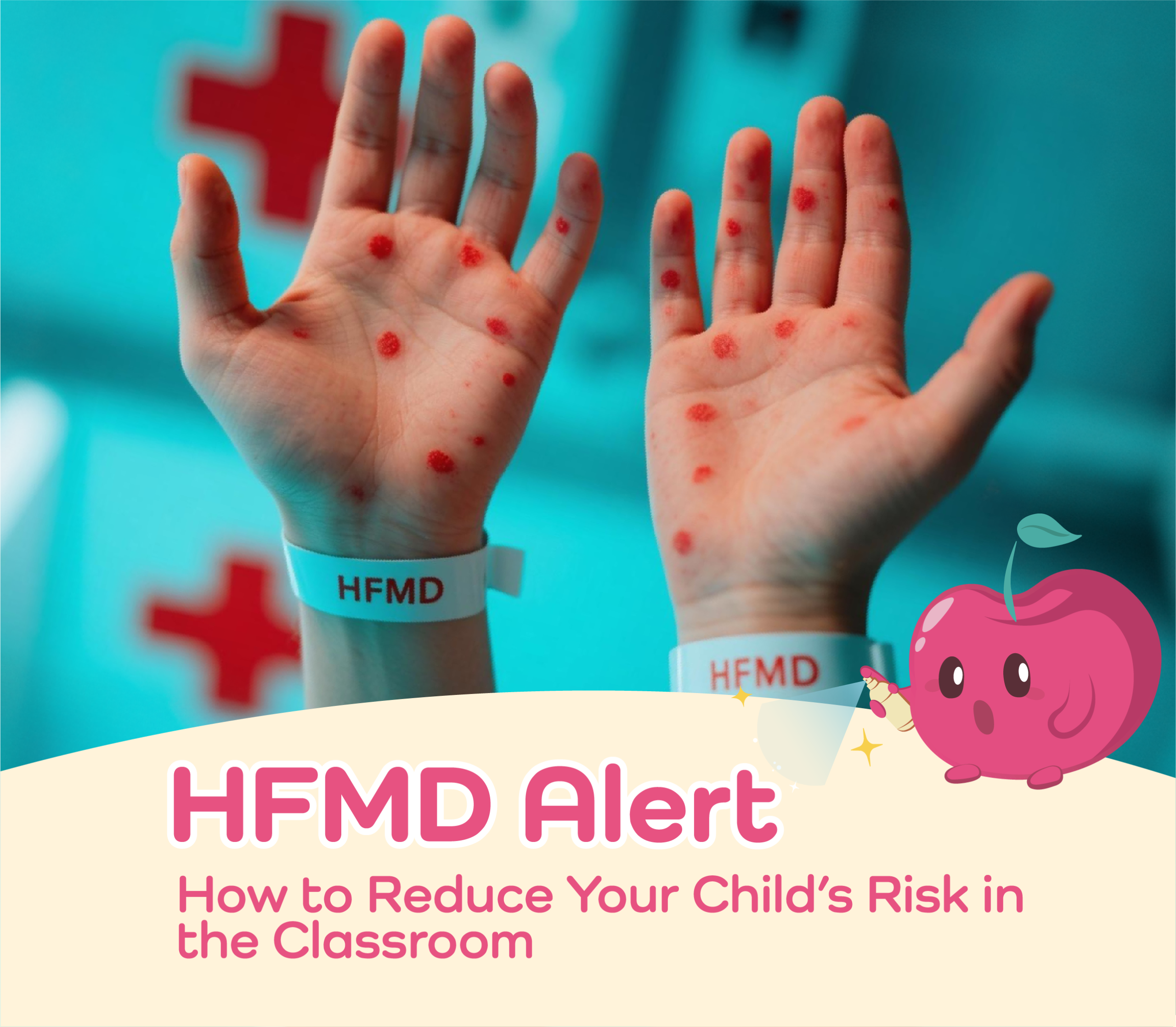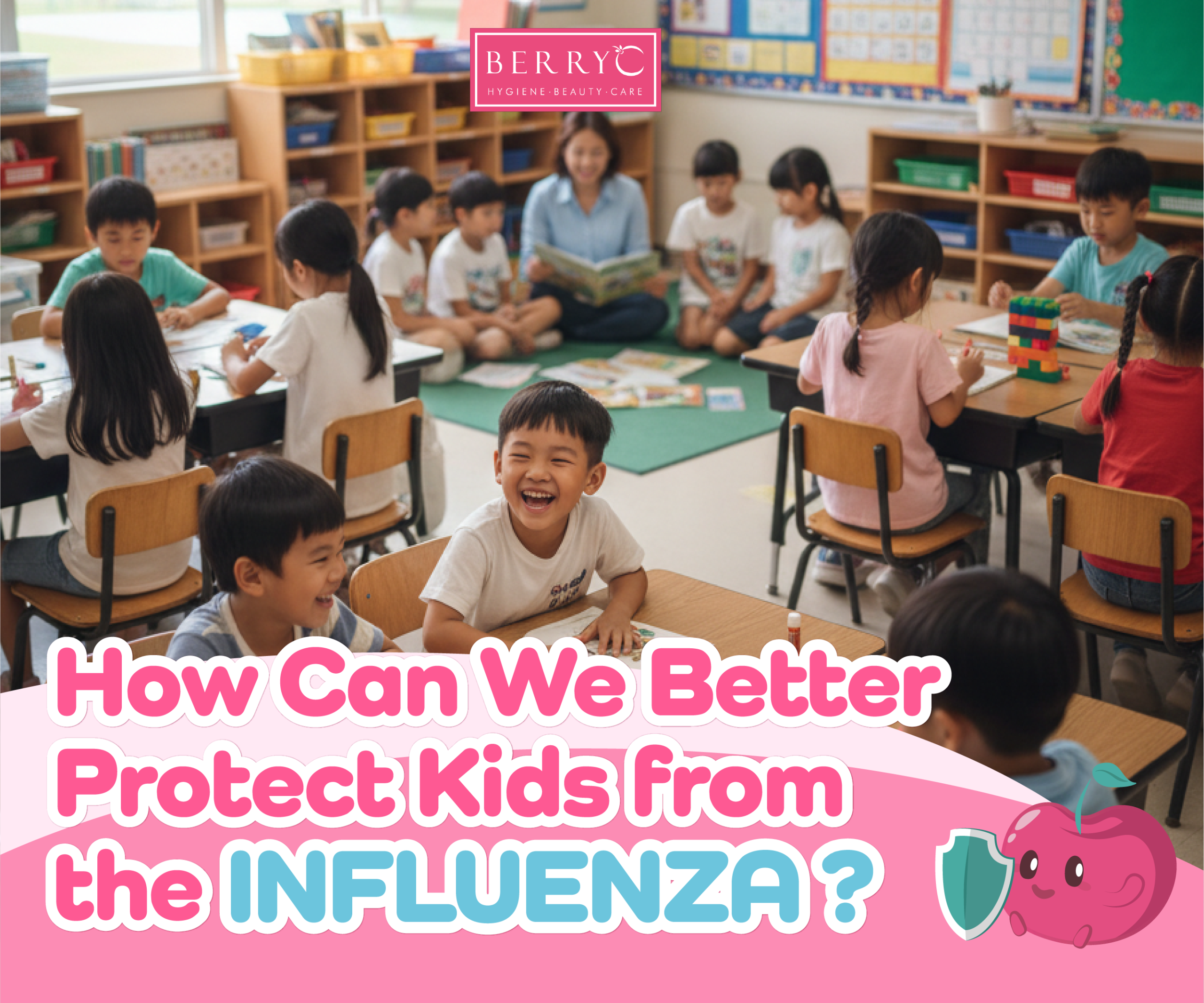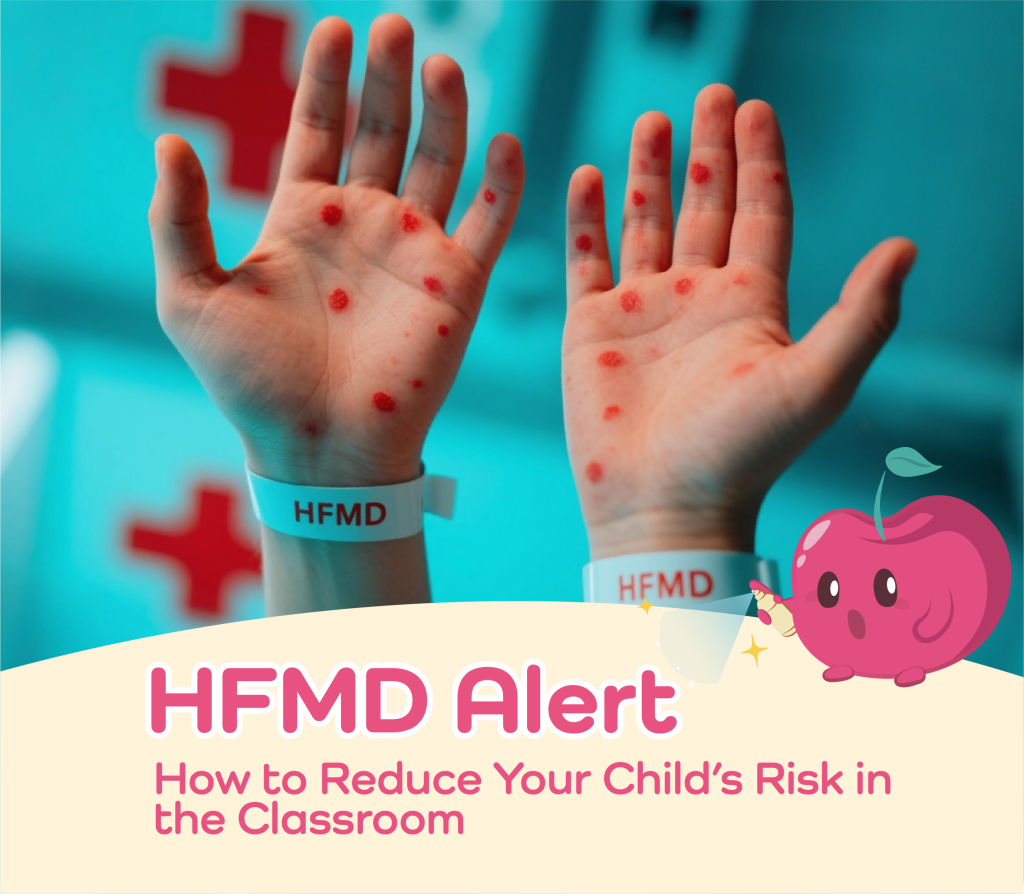
Hand, Foot, and Mouth Disease (HFMD) cases are on the rise again in Malaysia, particularly among children in preschools and kindergartens. With its rapid transmission and tendency to spread unnoticed, many concerned parents are asking the same question: How can I protect my child, especially in school where germs spread fast?
The truth is, we’ll never know for sure which child might be carrying the virus or who’s already infected—it often starts before symptoms appear. But that doesn’t mean we’re helpless. By following simple, daily habits, parents can help children build strong defenses against HFMD and other contagious viruses.
What Makes HFMD So Contagious in Schools?
Before diving into prevention, let’s understand why HFMD spreads so quickly in school settings:
- Young children often play close to each other and share toys.
- The virus is easily spread through saliva, mucus, stool, and fluid from blisters.
- HFMD can be transmitted even before symptoms appear.
- It can survive on surfaces like toys, tables, and books for hours or even days.
This is why prevention starts at home, with the right guidance and consistent routines.
4 Simple Tips Parents Can Teach Their Kids to Reduce HFMD Risk in School
Parents play a key role in preparing kids to stay safe, especially when they’re away at school. Here are four simple practices you can teach your child to reduce their exposure to HFMD:
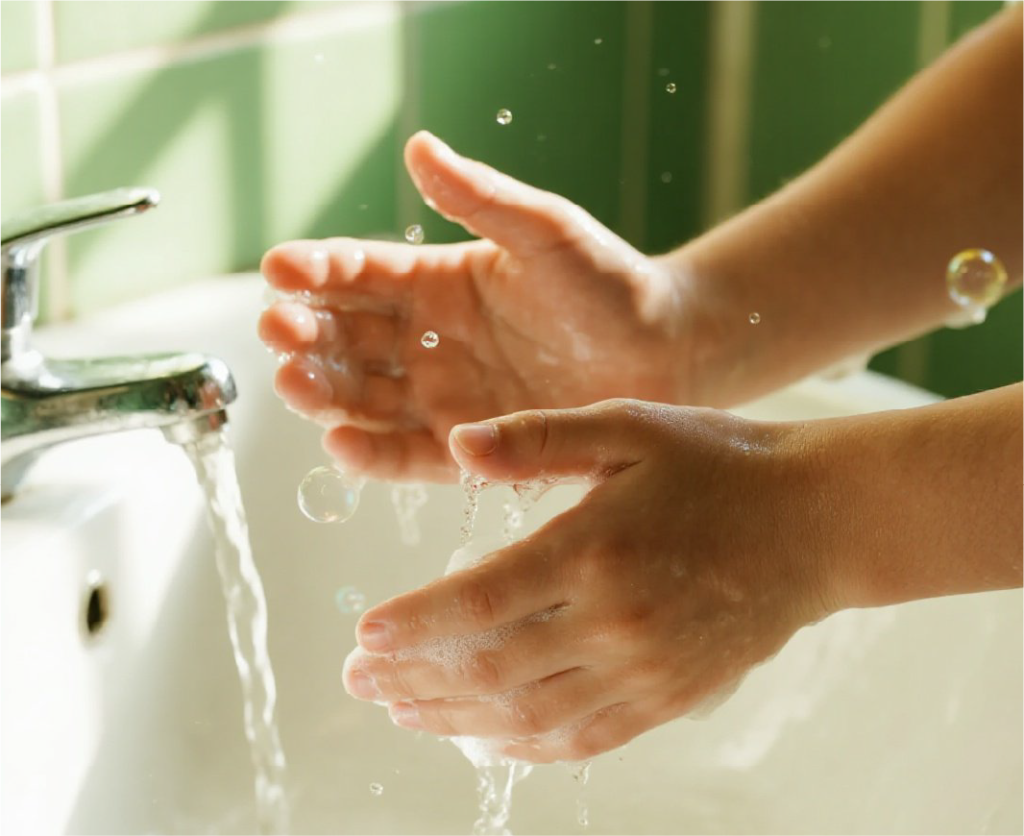
1. Wash Hands the Right Way—and Often
Proper hand hygiene is your child’s first line of defense. The virus enters the body easily through the mouth, nose, and eyes—often via dirty hands.
Teach your child to:
- Wash hands thoroughly with soap and water for at least 20 seconds.
- Focus on key times like after going to the toilet, before meals, after sneezing, or after outdoor play.
- Use hand sanitizer when soap and water aren’t available.
💡 Tip for parents: Turn handwashing into a fun routine by singing a short song or using colorful soap to encourage kids.
2. Don’t Share Personal Items
While sharing is a great habit in many situations, during an HFMD outbreak, it’s best to keep personal items separate.
Remind your child:
- Not to share drinking bottles, snacks, utensils, or handkerchiefs.
- To use only their own toothbrush, face towel, or school supplies.
- To speak up gently if someone tries to share something that could pass on germs.
Even everyday school habits like passing toys or crayons can be risky—so awareness is key.

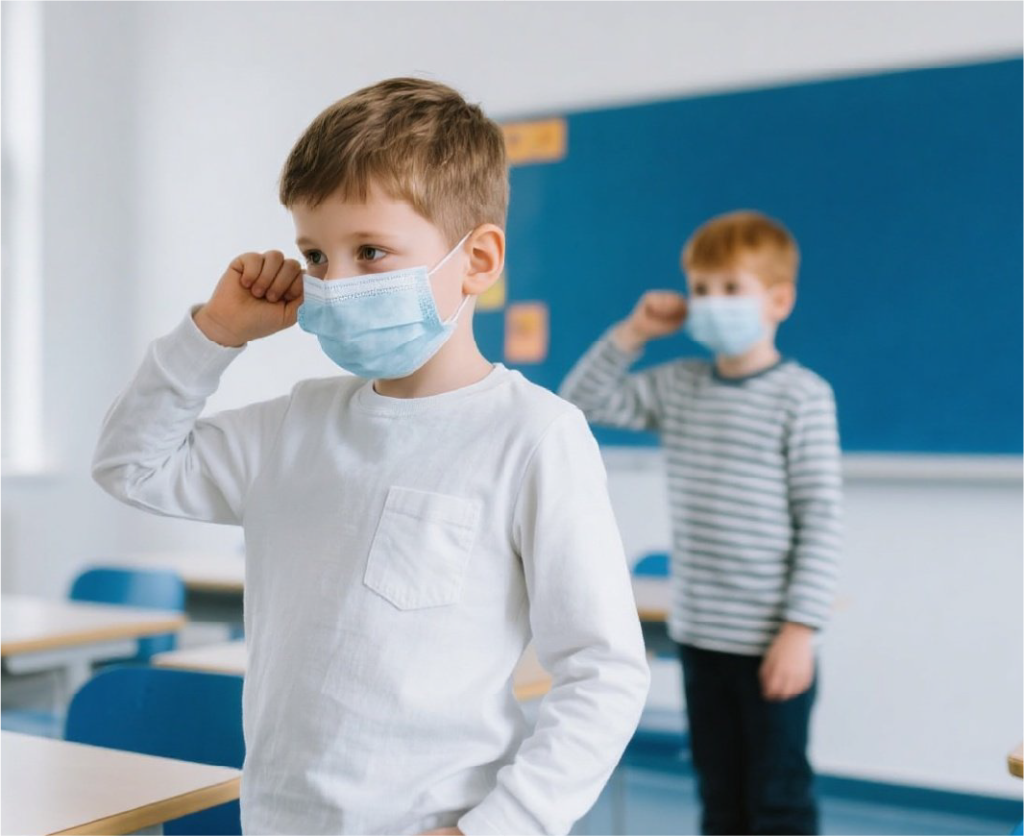
3. Avoid Touching the Face Unnecessarily
One of the simplest yet hardest habits to break is face-touching. Children often rub their eyes, scratch their nose, or put fingers in their mouths without realizing it.
Teach your child:
- To avoid touching their mouth, eyes, and nose with unwashed hands.
- To use tissues or handkerchiefs when sneezing or wiping their face.
- To wash their hands immediately after coughing or sneezing.
This habit takes time to learn, but it greatly reduces the risk of viruses entering the body.
4. Be Aware of Their Own Health—and Others'
Kids can be surprisingly observant. You can train them to notice early signs of illness and take action.
Encourage your child:
- To tell a teacher or caregiver if they feel unwell (fever, rashes, sore throat).
- To avoid close contact (hugging, sharing toys) with visibly sick friends.
- To rest at home if they are feeling unwell, even if it seems mild.
Early detection and distancing can help stop the virus before it spreads further.
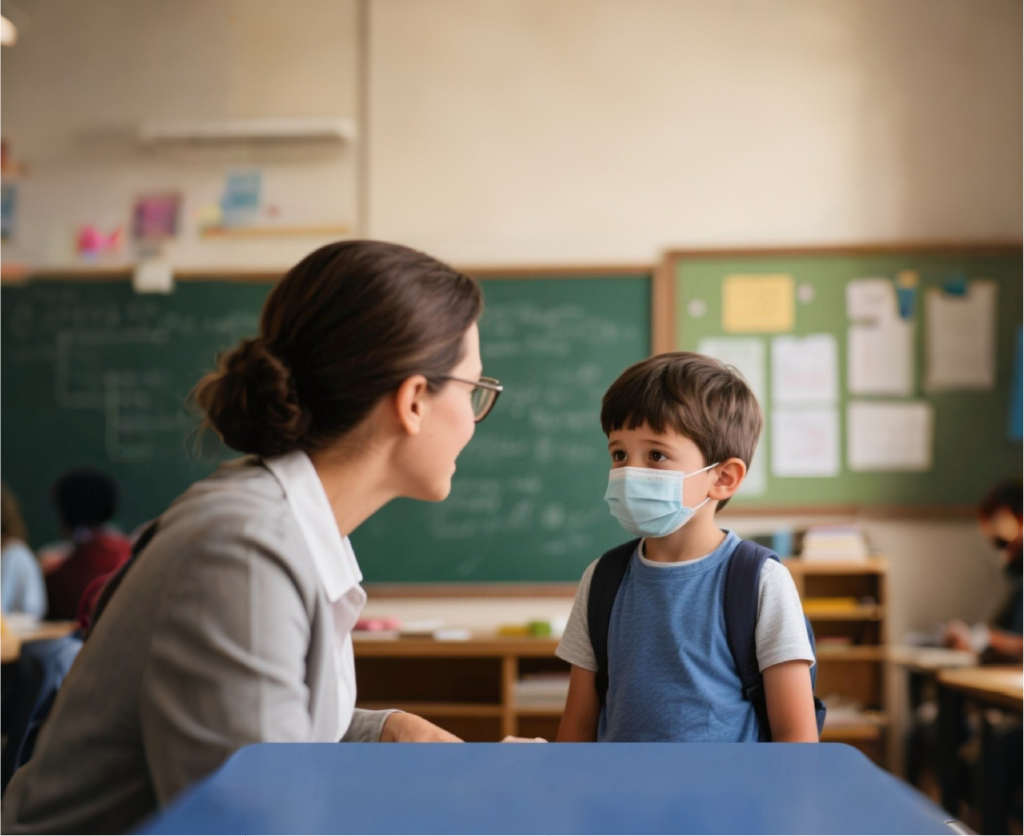
What Parents Can Do at Home: Disinfect Smart, Disinfect Daily
Even if your child is following good hygiene at school, it’s just as important to keep the home environment clean—especially with young children going in and out daily.
- Wipe down backpacks, lunch boxes, and water bottles after school.
- Wash school uniforms and masks daily.
- Disinfect surfaces like doorknobs, light switches, tabletops, and bathroom fixtures.
This brings us to one of the most reliable tools to help you sanitize effectively—BerryC Sanitizer Spray.
BerryC Sanitizer Spray: Daily Protection for Your Family
In times like this, every layer of protection counts. BerryC Sanitizer Spray offers a reliable and science-backed way to reduce exposure to HFMD and other viruses at home and in school.

Why BerryC Sanitizer Spray?
- ✅ 28-Day Protection on Surfaces
Once applied, it creates a long-lasting antimicrobial layer on solid surfaces that stays effective for up to 28 days. - ✅ 4-Hour Protection on Hands
Unlike ordinary sanitizers, BerryC’s formula continues to protect skin even after multiple touches. - ✅ Safe for Kids & Non-Toxic
Alcohol-free, gentle, and safe for daily use around children.
- ✅ Quick & Easy to Use
Just spray—no need to wipe. Best applied to:
- Tables and chairs in classrooms
- School bags and lunch containers
- Play areas and shared toys
- Home furniture and bathroom surfaces
💡 Tip: During an active outbreak, spray high-contact areas daily for optimal protection.
Conclusion
We may not be able to control outbreaks happening outside—but we can empower our children with good habits and take smart steps at home to keep them safe. With a little effort, HFMD doesn’t have to make its way into your home.
Start by teaching your child the basics: handwashing, avoiding face-touching, not sharing personal items, and recognizing signs of sickness. And don’t forget to protect your living space with effective surface disinfection.
✅ For reliable long-term protection, add BerryC Sanitizer Spray to your daily routine.

